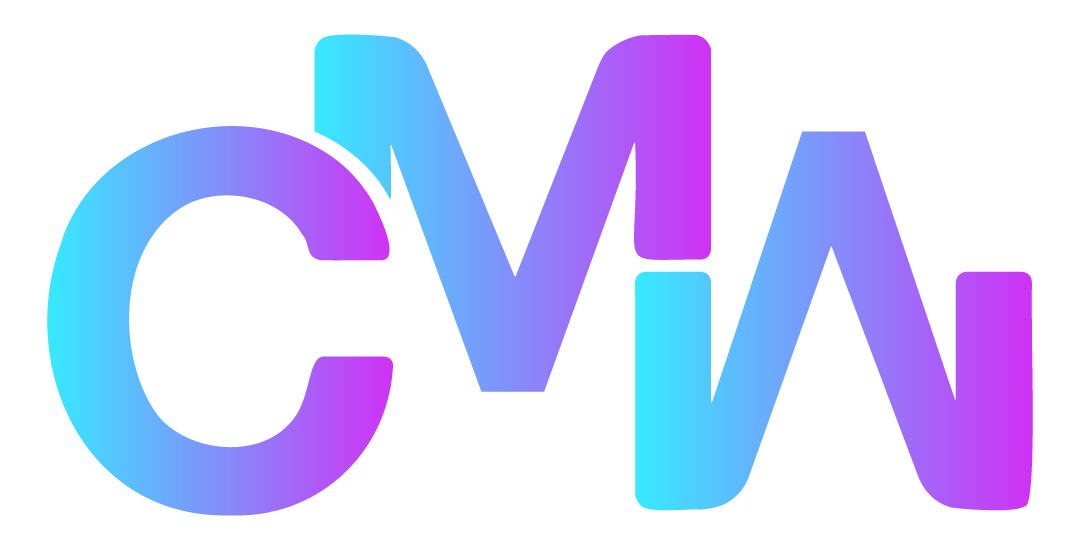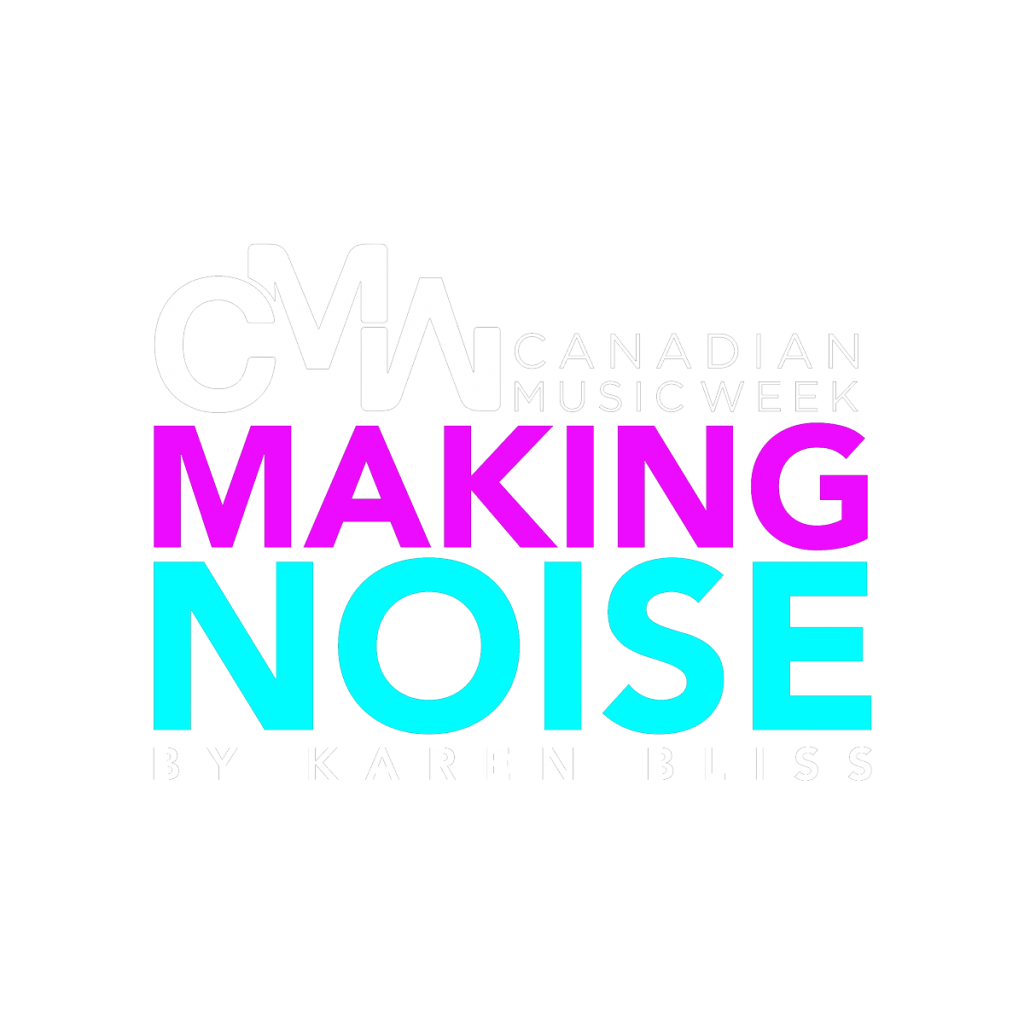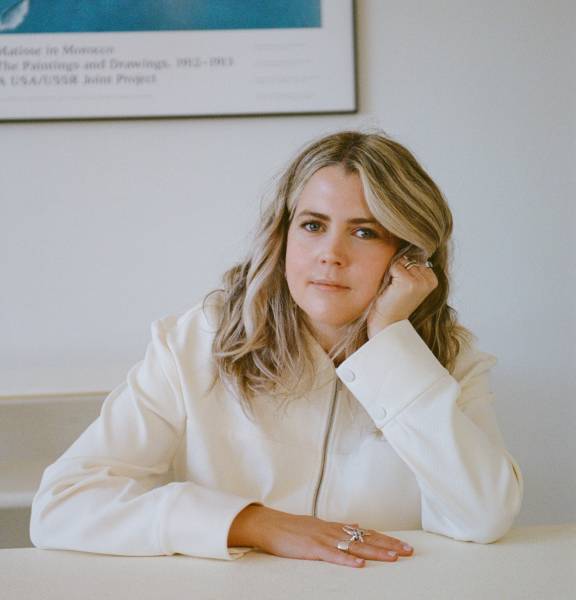BY KAREN BLISS

The 580,000 square foot LED screen on the spectacular Sphere in Las Vegas was created by SACO Technologies, a pioneering Canadian company headquartered in Montreal. For anyone who has visited Sin City recently, the giant glowing orb, built for (USD) $2.3 billion (CAD $3.048B), can be seen from just about anywhere with its ever-changing façade from a smiley face emoji to advertisements.
On July 4 last year, the fully-programmable “Exosphere” — the outside of the Sphere — was lit up for the first time, debuting with the words “Hello World.”
Inside, it’s a venue like no other, a futuristic multi-sensory out-of-this-world architectural and interior design wonder, imaginative, scientific, yet simple and elegant. If the Jetsons went to concerts, they would do it at Sphere. The capacity ranges from 17600 seated to 20,000 (inc. the floor).
In September, U2 became the first-ever music act to perform there, a residency which ends March 2, and, in October, in between the U2: UV Achtung Baby Live at Sphere shows, the first Sphere Experience, the film Postcard from Earth, directed by Darren Aronofsky, began screening. Phish is the next act, April 18-21.
SACO doesn’t just create LED designs for buildings, among them Dubai’s record-breaking Burj Khalifa and the guitar-shaped Hard Rock Hotel in South Florida, but has worked on all kinds of innovative stage elements for touring artists, among them Muse, Pantera, Elton John, Taylor Swift, P!nk, Paul McCartney, Celine Dion, Pink, Bruno Mars, Nine In Nails, Tim McGraw & Faith Hill, Madonna,, Michael Bublé, Mumford & Sons, KISS, Cher, Lumineers, Jonas Brothers — and, of course, U2.
Jonathan Labbee, co-CEO of SACO — named by CMW as one of 2023’s Music Industry Leaders — tells Making Noise they started working on Sphere’s screen in 2018 for MSG, now Sphere Entertainment Co.
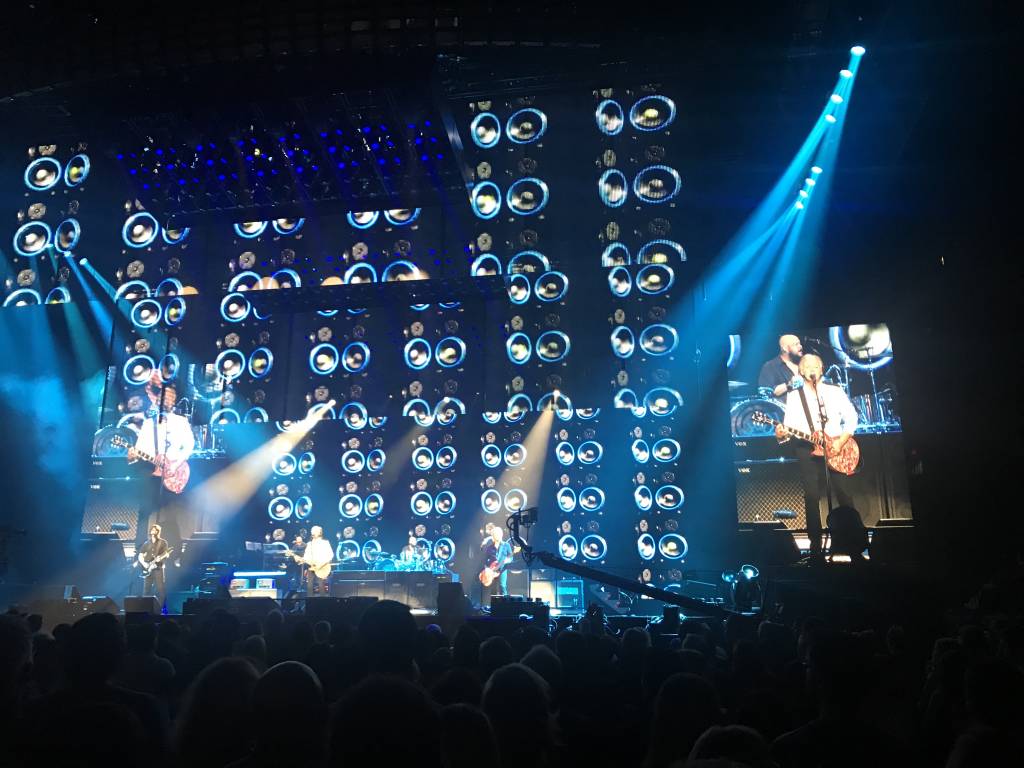
He talked to Karen Bliss about how the company was “born in the fires of rock and roll,” the limitless capabilities of “just a tiny little light” and what’s next for SACO. “We are very much in the shadows, and we do that on purpose because we deal with rock stars and princes of countries. The spotlight should always be on our clients,” he says.
Did you bid on the contract for the Sphere or did it come through your relationship with U2?
We didn’t even know U2 was going to be opening the Sphere. So for us, it was a sign or something. It was awesome. Because as a first client, when they launched PopMart with our screen, it was in Las Vegas.
Wow. So a full circle, or full sphere, moment.
Full sphere [laughs]. We were crazy happy when we found out U2 was opening up the Sphere. But, no, we did not bid on the Sphere. MSG, with their internal partners, did due diligence on anybody that they thought could be a good partner and we happened to be working with [architects] Populous already on the exterior because the interior originally was supposed to be projection. It was not supposed to be LED. It was supposed to be several projectors and when they scrapped that idea, and because of their connections in rock and roll and touring, they ended up back at SACO, “You guys are already working on the exterior,” then they came to visit us, and then we worked directly for MSG.
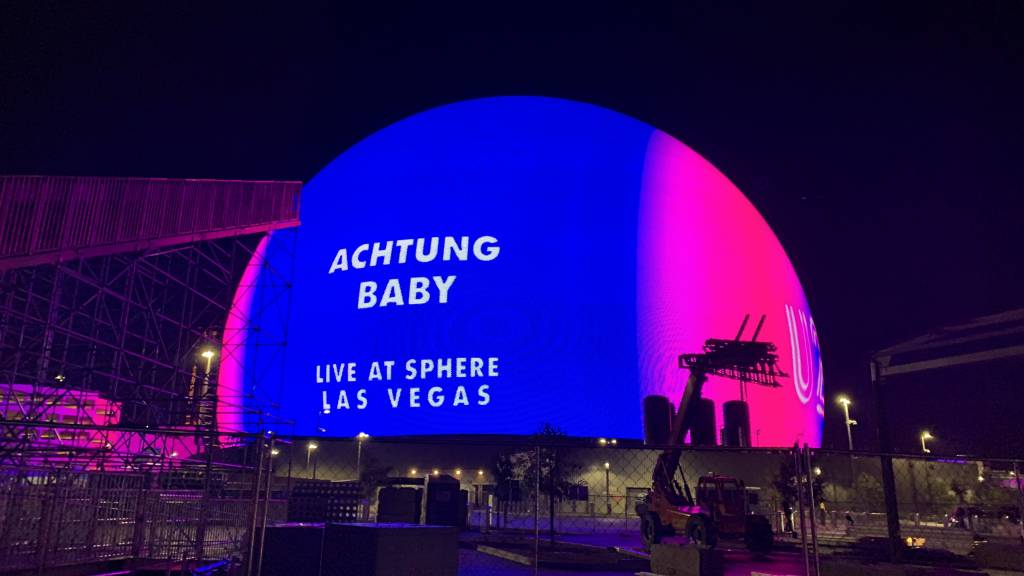
Do you consider yourself part of the tech industry or the music industry?
We were born in rock and roll. Let’s just put it this way.
What does that mean?
We were literally born in the fire of rock and roll. Let me tell you what I mean by that. Let me give you a quick little history on SACO. That’ll be super helpful.
The company was founded in 1987 by Jalbout brothers [Fred and Bassam], who are my partners, still to this day. They’re super brilliant guys. SACO used to build these industrial control panels for industrial plants and nuclear plants. You probably only see them if you watch a Steven Seagal movie because he’s always on some sort of oil rig. So that’s what SACO used to do, then one of the brothers started experimenting with LEDs to replace traditional light bulbs and that worked out really well. SACO stands for Systems Automation Control. So they started writing programming on how to control the colours on these lights, and then, at some point, a company called Nichia, which is an LED diode manufacturer out of Japan, came out with a blue LED.
So Nichia invents the blue LED [which won the 2014 Nobel Prize in Physics], and they sent the very first blue LEDs to Bassam, who arranges it in a pixel configuration with a red and green LED, and creates the very first video pixel on Earth. And then, he took a bunch of these and he put them together and created the very first LED video screen on Earth, not thinking about where it could be used. They were still thinking of their original market. Now we’re at about 1993. So they make a little display. It’s very small; it’s cool; it’s thin. You would think game-changing, if you had a little bit of vision back then. And then they met U2, well, we met U2.
That’s so interesting that U2 was the very first act SACO worked with.
U2 was the first customer to ever use an LED screen. They see this little demo and they’re like, “Wow, this is amazing. We want to replace our JumboTrons. You think you can build a 50-foot by 150-foot video screen?” This was, I believe, in ‘95, ‘96. That was for PopMart. There’s actually great footage of Bono thanking Fred [in 1997] — you can find it on YouTube. So. of course, we accept the challenge, and we build this very first LED screen and U2 being the very first customer.
At that point, we’re now touring with U2 to set up these screens and we take advantage of that because we’re going to all of these different venues. They were stadium tours and we’re basically utilizing that as a sales platform to get into arenas and stadiums. And we become successful there. Baltimore Ravens’ stadium [PSINET Stadium, now known as M&T Bank Stadium] and the MCI Center in Washington [now Capital One Arena], and so on. At the same time, we’re now doing a bunch of other acts. Celine, of course, she’s from here [Quebec]. We ended up building a bunch of stuff for her, and Cher, and Janet Jackson. We made this video screen book for Janet that opened up. So that, eventually, leads to us building NASDAQ in Times Square, which is really the very first video building and you start understanding that there’s something beyond rock and roll and sports.
We continued to remain strong in rock and roll. Our mentality then is forged at that moment in time with rock and roll. And that’s why I say, “We were born in the fires of rock and roll.” That’s because the mentality you have to have when you’re on tour, or if you’re in the music industry, is you just gotta make it happen.
You meet with these bands, their management, they must throw out blue sky ideas. What are the limitations of LED?
It’s what we refer to as ‘boundary conditions.’ There’s a limitation to what the technology can do, and then there’s also limitations on the budget and time. All of those things you have to consider. Those help dictate what you’re going to do. But we try to not look at the limits of LED because an LED, at the end of the day, is just a tiny little light.
To explain what we see on the outside of the Sphere, in layman’s terms, it has 1.2 million LED pucks, spaced 8-inches apart — and I don’t know if the spacing is significant — and each puck has 48 LED diodes. I’ve read in press material that each diode can display 256 million colours?
It’s actually 281.5 trillion colours. Let’s start with the specs to the Sphere. You have the outside of the Sphere, what the client refers to as the “Exosphere.”
That’s a made-up word, right?
Yes.
But that’s gonna be a thing. We’ll all be calling it the Exosphere.
Yeah, it’s a thing. The Exosphere. Super-cool and high tech. It’s a good buzzword. So you have the Exosphere, and the Exosphere has these pucks. We’re Canadian, so let’s use the word hockey puck. They look a hockey puck, in this particular case. The architects wanted something that looked round.
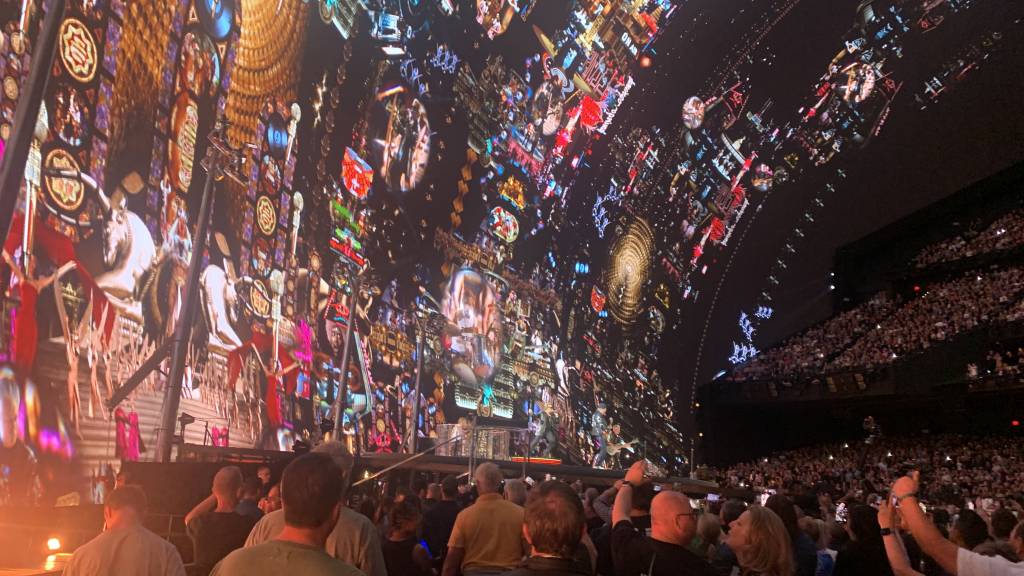
But it could have been square?
Could have been square. Could have been anything. But to serve this particular purpose, this was the best aesthetic for it. There’s 1.2 million of them around the Sphere. Each one of them does indeed have 48 LED diodes. And the diodes basically have red, green, and blue colours inside each one of them. One of the reasons why we do that, we want to get a certain bloom coming off of them. So they need to be a certain size, and they are spaced out at 8 inches. And the reason they’re spaced out at 8 inches is purely to create a level of transparency where you can see the base building inside of this giant exosphere.
The Exosphere, think of it as a round skeleton and then inside of it is a smaller building, which is the actual venue. When you look at certain pictures, you can see right through it. That was to create a level of transparency. We could’ve put them super tight, where it becomes almost solid, but the architects wanted it to be very flowy and less heavy looking. So that’s the exterior in terms of the colours — 281.5 trillion colours. The SACO system processes the video signal at 16-bit.
Now you would think, “Oh my god, can I even see that?” The answer is yes and no. It all has to do with resolution of colour. Your laptop is probably operating at 10-bit [display]. So you’d be more in the one-point-something-trillion shades of colour on your laptop. It’s how you get pastels. The whole system over there [Sphere] is operating at 16-bit. And this is super-important for the immersive part of the building. It gives you this whole breadth of nuances that can transport you to real life. It gets as close to real life as possible. So the outside of the building was created originally to give awareness to this new type of performance venue. This is what MSG wanted.
SACO processes the data at 20 bits levels, in order to control the colours and filter noise levels out. We then drop some bits, which results in preserving the quality of the image. This results with a clean 16-bit colour processing, which equals 281.5 trillion shades of colour.
The Sphere’s current content delivery system is 12-bits uncompressed video. The LED system is 16-bit. So, if we use the lower denominator content delivery system the input video is 12-bit for the moment, however, the output to the screen is 16-bit. With colour processing, you end up with crisp clean colour. It also means that as new content delivery systems standards emerge, the system is already able to display colours at this level.
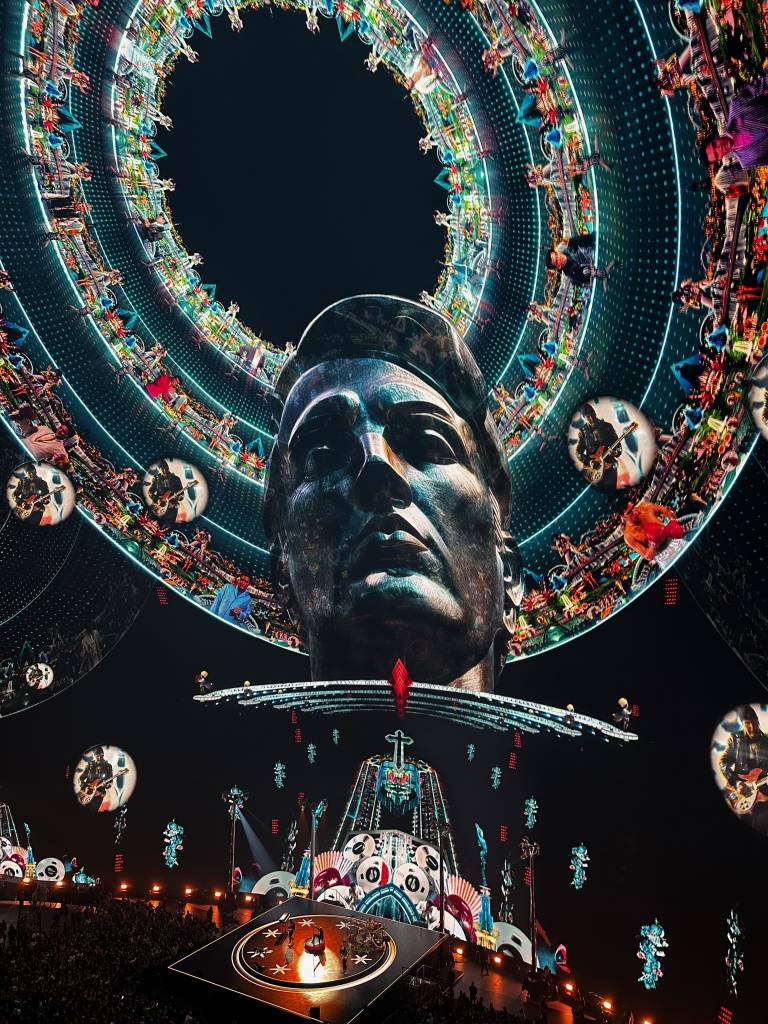
Have you done exteriors like this in other cities?
Yes, but different buildings have different performance criteria and different shapes, obviously. We did, for example, the whole roof of the SoFi Stadium in Los Angeles. And we did Burj Khalifa in Dubai, the tallest building on earth; that’s all video on the front of it. It’s almost a kilometer worth of video screen.
Normally, when we clad a building with video it’s to enhance its shape and enhance what we call the ‘nighttime identity’ of the building. The Sphere had a slightly different mandate. Because it’s such an innovative approach to a performance venue — like for bands, where they’re completely redefining the game — they really wanted to use the shape of the building to bring awareness to it and the best way to do that was to do a whole video building because then you can make it look the way you want. Because the whole skin of the building is full video, you can make it as loud or as soft as you want. You can have it just barely move. Or some of the scenes they have is just the moon; it’s beautiful. And then you have some loud advertising because it’s appropriate for the city. I would assume that different cities would have different constraints and considerations when it comes to the content.
Did SACO need to dialogue with the creators of the visuals?
Yes. It’s MSG studios. It was such a unique undertaking. They assembled this team of probably the best people on earth in their different crafts. Who we interacted the most with, obviously MSG themselves — they were also leading the construction effort of this. MSG studios and their ventures team, that’s their technology and their content team who are designing, but as we’re ideating, and coming up with a final format, we have to interact with those other teams so we can provide them with data, and back and forth on whatever they’re trying to do, and then Populous, who are one of the leading architects on Earth. So we interact with everybody, but, like I said, the outside had a very specific mandate.
You have to start with like the base idea. You can do many things, but here, in this case, they wanted theatre type seating with the performance in front of you with a clear defined show area, where the proscenium is. Once you define what you’re trying to achieve, for the artist and for the immersiveness, then you start designing everything around it. We can pretty much do anything now that we’ve cracked certain codes of geometry with LED screens. But the venue is a performance venue first, and then everything else is there to enhance that. Part of the design brief is the client wanted people to feel like they were inside of a VR headset and with 18,000 of their friends.
I was on the floor for U2, but before it started I went up to the highest level to check out that perspective. It’s very steep but very cool. On the floor, I almost wanted to lie down to take it all in.
When I went to the opening, I moved around, but we got our seats in the 300 level. I feel like that’s the sweetest spot in the house because you get to really feel that whole immersiveness. The interior of that building is its true gem because it’s truly rocket science. There’s nothing like it on Earth. Outside of it is amazing because of its shape, but it’s a big advertising platform. But the inside is a true performance venue and they put so much care and attention in the integration of stuff. The audio, there are no speaker stacks that you would find on a traditional stage. It’s super clean, that turntable stage, and they had those four mechanized lights only. All the audio is this new audio tech from Holoplot that is everywhere behind the screen.
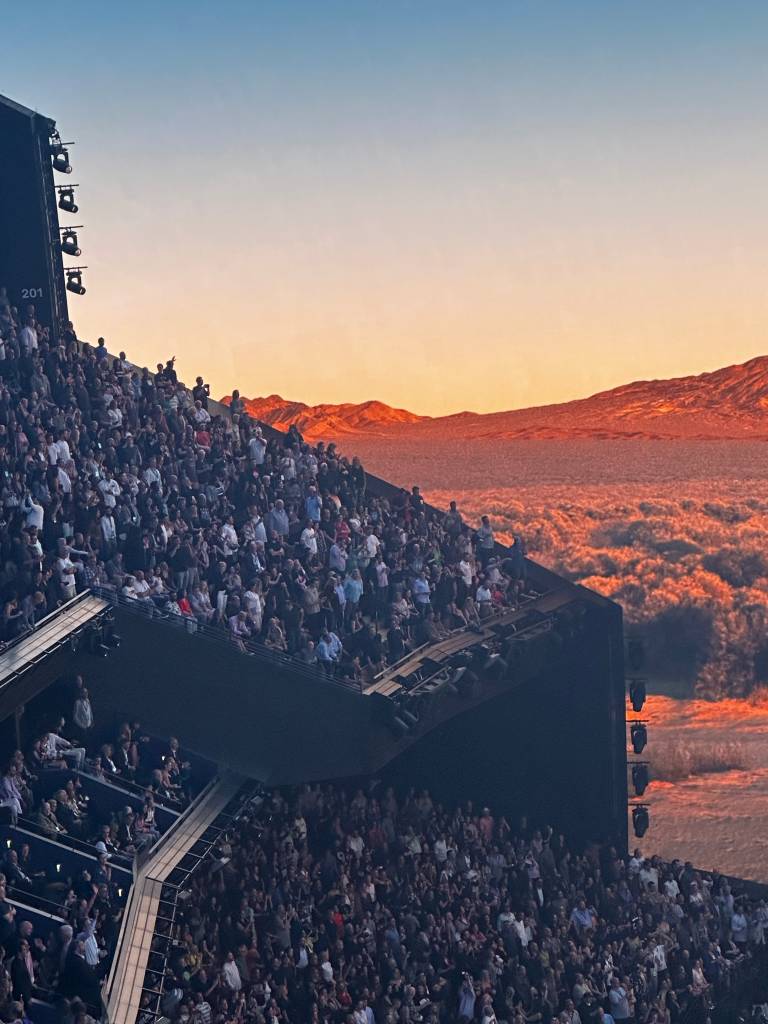
We are not audio people, of course, we’re visual people, but we had to work very closely with the MSG team and their audio team over at Holoplot to understand how sound works so that we could design our video screen to allow sound to go through without distortion. And we came up with new technology in order for that to happen. We’re used to doing that. When we work with, say, [production and lighting designer] Roy Bennett; we create visually transparent screens. Like if you look at U2: Innocence + Experience Tour, Bono and the band are inside of the screen or you have Nine Inch Nails, where you had all of these levels of transparency in the screens. And we learned ‘audio transparent’ does not mean the same thing as ‘visually transparent.’ So we had to come up with a new way of building a video system that allowed audio to go through uninterrupted.
“Hello World” is a common greeting in computer programs. Did you have any say in the first image outside on your screen?
No. We actually saw that at the same time as everybody else. Obviously, during the testing phase you see things but MSG did a clever job of keeping things simple and secretive in the beginning so that it could be a big surprise for everyone.
With the other artists you’ve worked with, from Kiss and Muse to the other side of the musical spectrum, Bublé and Celine and Tim McGraw and Faith Hill, what are some of the things they asked for or were unique at the time for SACO?
We always find a way. I’ll tell you a limitation that we hit at some point, and then how we overcame it, because it completely changed the industry — McCarney and his team, this was Roy Bennett, wanted this big halfpipe and very large video screen and one of the limitations, especially when you’re traveling to different arenas, is the roof load of those different buildings. They can only handle a certain amount of weight and you have the lighting rig and the trusses and the video screens. So to overcome this, we started experiment with different materials in order to make everything lightweight. We actually came up with a screen that was 40% of the original weight of any other video screen on Earth. That means that you could technically go 40% larger. So we were able to accomplish that.
I remember when Roy Bennett for Nine Inch Nails, they wanted these three video screens and the band was in between the screens. So it needed to be highly transparent because they wanted to do these 3D effects without glasses. We had never done anything like that before. And they didn’t want any wires. So we came up with the concept and we proposed it and refined it. And then that same type of technology ended up on Innocence + Experience to create this transparent screen for U2.
I think that every vision brings an advancement in the technology or in the method of fabrication. I would love to tell you we come up with all of these great ideas, but the truth is that it’s our clients that say, “I want this,” and then we figure out how do we do this.
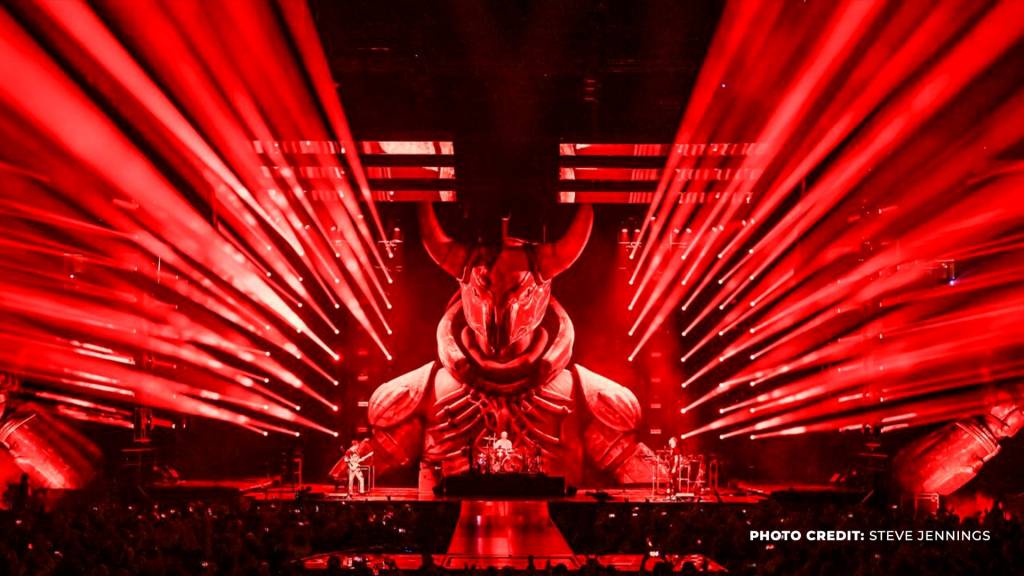
U2 and Muse are known for being forward-thinking. What did you do for a more traditional act like Tim McGraw and Faith Hill?
This was interesting because it made us rethink how to do floors because they wanted a video floor and video steps They were one of the first to ask for that. How we originally approached this was just to use the video screen and put plexiglass on top, until we realized that it created lots of static and that wasn’t good for the screen. So we had to rethink how we do a floor. So every act has different ideas and requirements. And funny enough, some of the acts that you think would be more traditional in their show end up being the most innovative.
Have to ask about the Canadian, Michael Bublé. What did you do for his show?
What we did there is the video vendor needed the screen to be chrome. So how do we chrome the video screen and still allow it to transmit lights? So we replaced a front component on it that we removed and had it chromed and had put back on the screen, and the whole screen became like this chrome mirror. So it starts off as a chrome mirror, of course people think it’s a mirror, and then all of a sudden there’s lights through it and all of a sudden there’s full video and they’re like, ‘What the hell?”

And, Taylor Swift?
Well, it’s the current tour and the previous one. Well, Taylor Swift used all the inventory I think that Solo tech had. Again, just to be clear, the video vendor on that project is Solotech, who’s utilizing SACO screens for the main part of it, and then Tait Towers do most of the staging on the tier one concerts.
All these acts are huge. Do you work with mid-level acts? How small will you go?
We don’t look at projects as a big or small. We’ll take on anything that has a challenge. That’s our mentality. It just happens that we’ve made a name for ourselves in tier one touring. And, we utilize our touring connections as an R & D [research and development] lab. It’s where we deploy new ideas and we test out new things because these artists are willing to take chances. Then, when something works out nicely there, we refine it for our permanent architectural market.
Permanent installation, we do all the time. We don’t really have a size. We’ll do projects that are small, couple hundred thousand [dollars], up to several tens of millions. But, for touring, what happens is that the companies that procure our equipment, like Solotech, they just happen to be specializing on those level of tours. They have other equipment that may be a little cheaper that they utilize for smaller bands. So, we don’t have connections with the smaller bands. We have connections with the larger bands or the more popular bands. It just works out that way.
What are you working on next? Can you share?
I can’t, but here’s what I can say. At the opening of the Sphere, everybody there we literally felt the earth shift a little. What I mean by that is believe that a lot of people that were on the edge of doing something bigger or more out of the box, I think those people were waiting to see how the Sphere would awake the world. And, I can tell you now that we’re months into the types of requests that we’ve been evaluating and working on, and the types of clients, it’s a whole different level.
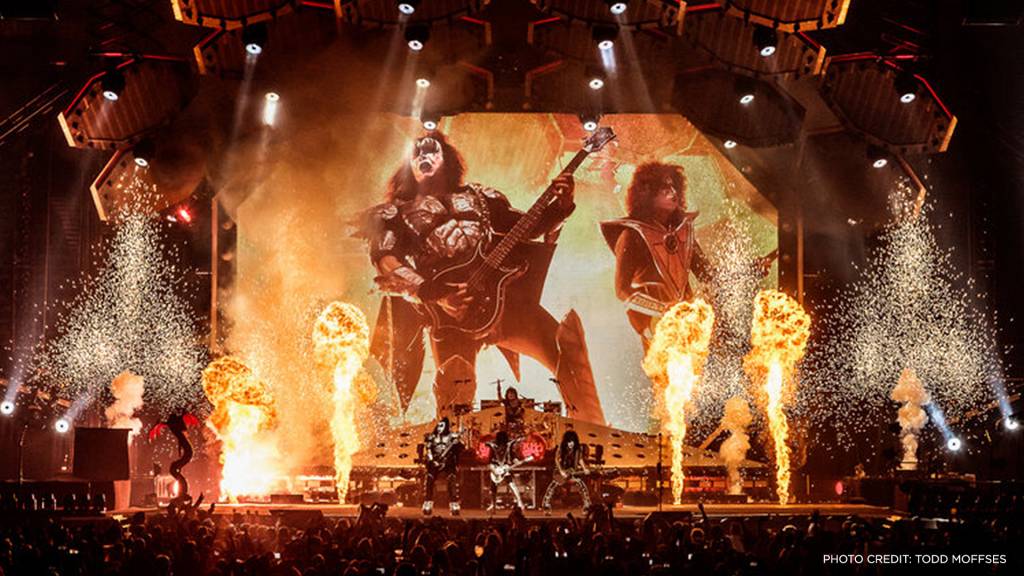
More Spheres around the world perhaps?
I think MSG is going to own the Sphere for a while. I don’t think there’s going to be many people wanting to go up against them. I mean, they have such a head start and they are really a fantastic operator.
Well, Vegas is the perfect city for the Sphere. Grand and flashy.
Actually, one of the things that I’m hoping — and this is more myself — but, for a while, I think people were abusing the technology. Video screens here, video screens there, almost tacky. Always on. I hope that one of the things that the Sphere is going to get people thinking about is proper integration and proper use of the technology so that it’s not annoying. You didn’t use the word loud, but maybe it’s too loud? You can make it elegant. You can make it fit with the vibe of the space or the vibe of the band. Ultimately, the Sphere is a canvas.
Will you be at Phish?
I might go check it out because I want to see what they do with the visuals. I’m sure the visuals are going to be wild. If you do go back to see a concert, make sure to go back and see the immersive Aron Aronofsky film [Postcard From Earth, filmed in 18Kresolution]. It’s great from a visual point of view. It’s such a different experience from the same place. You really see the breadth of this venue, what it can really do.
